Crest Hat Item Number: E89036-0 from the National Museum of Natural History
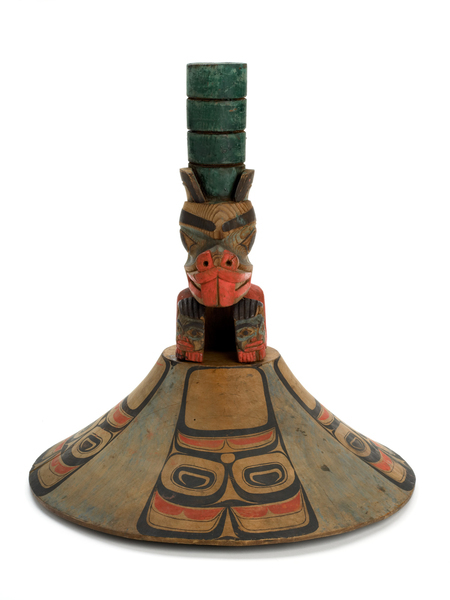
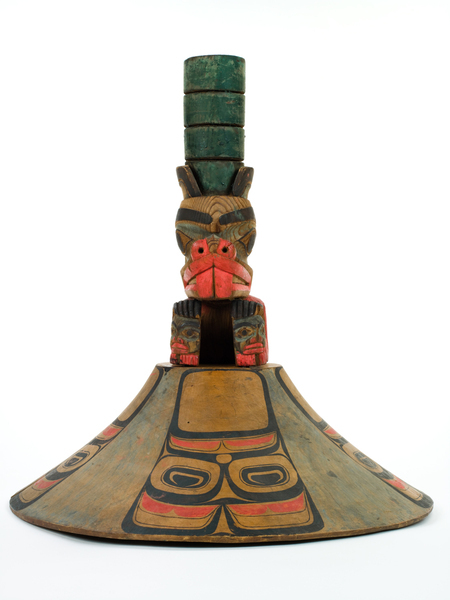

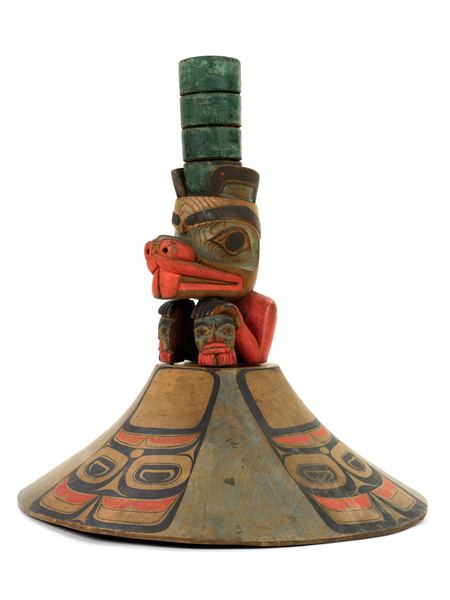
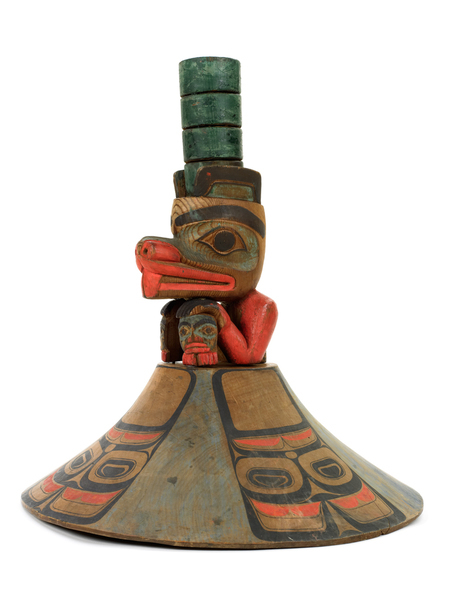

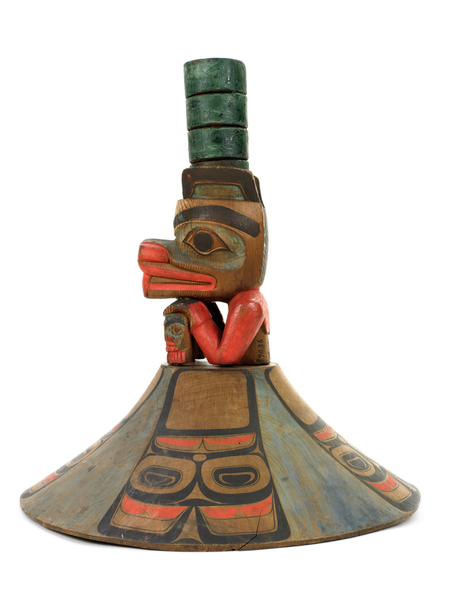
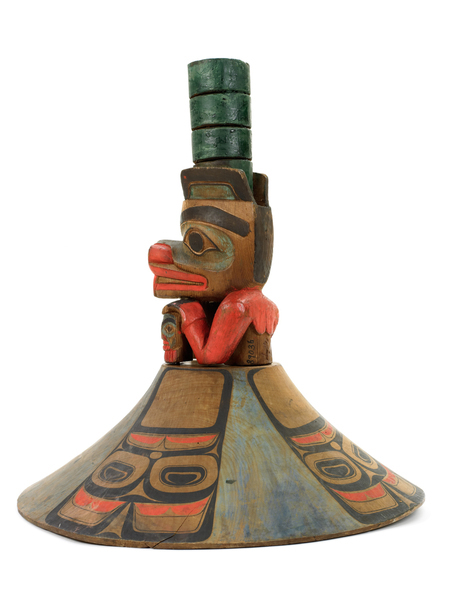


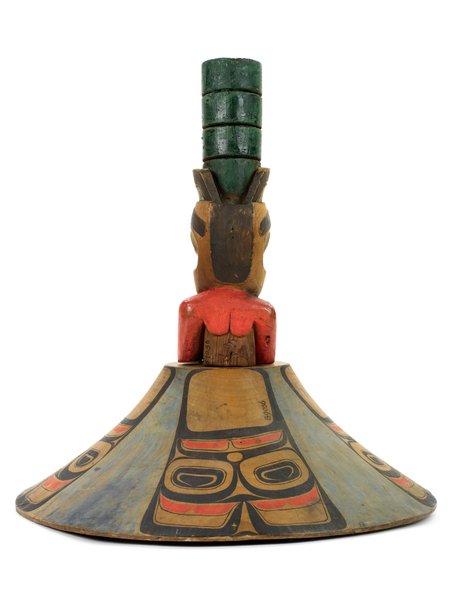
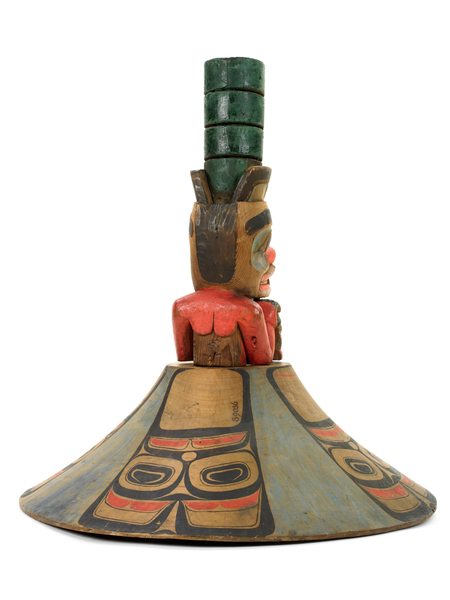
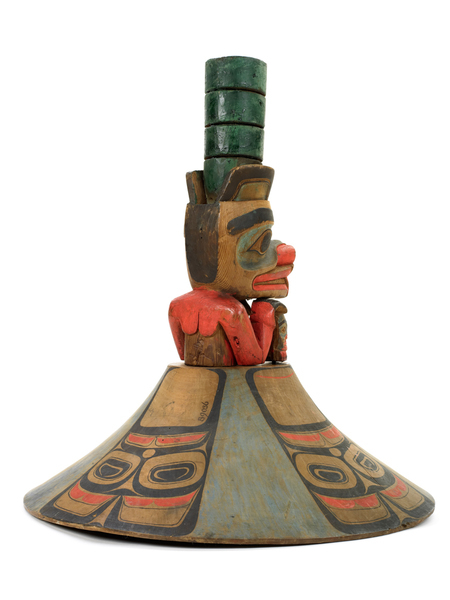



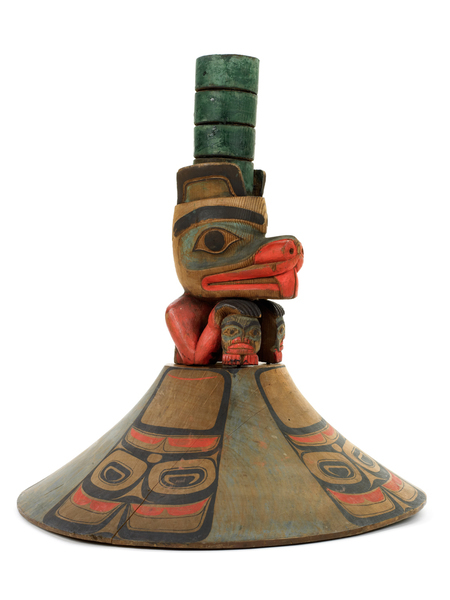
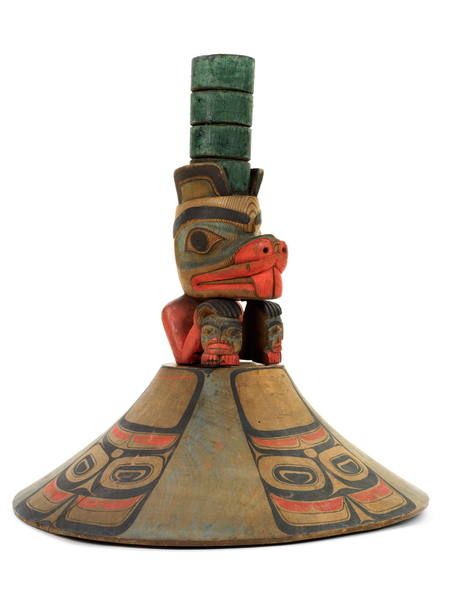
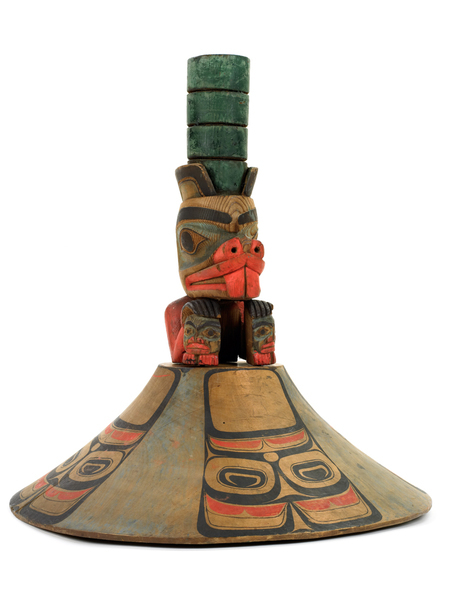
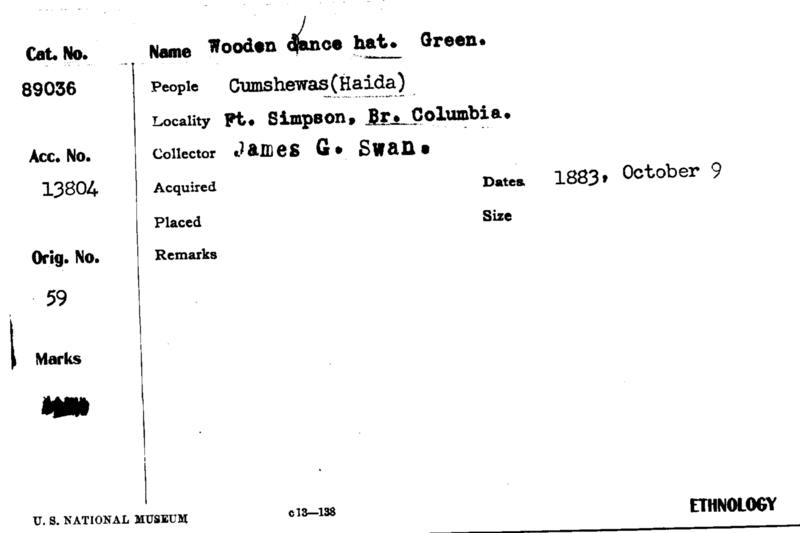
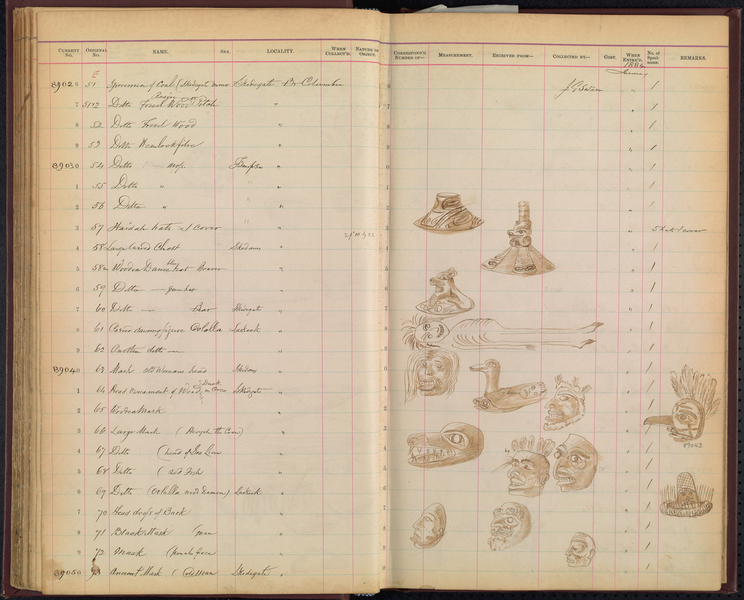

Notes
Original cataloguing identifies this object as "Wooden Dance Hat, Green." Illus. Fig. 385, p. 280 in Fitzhugh, William W., and Aron Crowell. 1988. Crossroads of continents: cultures of Siberia and Alaska. Washington, D.C.: Smithsonian Institution Press. Crossroads caption identifies the brilliant red pigment on the hat as vermillion, made in China and acquired by trade. Source of the information below: Smithsonian Arctic Studies Center Alaska Native Collections: Sharing Knowledge website, by Aron Crowell, entry on this artifact http://alaska.si.edu/record.asp?id=184, retrieved 4-28-2011: Crest hat. This wooden ceremonial hat a Beaver clutches two Eagles in its paws. Haida clans of the Eagle moiety own both of these crests. Cylinders stacked on the beaver's head signify that the owner of the hat had hosted four major potlatches, an accomplishment possible only for a wealthy chief. Decorated shields of beaten native copper (called "coppers") were a symbol of wealth and are represented here by painted motifs on the hat's brim. The base of this hat was carved from alder and the upper portions from cedar. Extracts from Elders' discussions of the hat in 2005 (see web page cited above for the full entries): Delores Churchill (Haida): 'It's a beaver. . . . It's strange though, even though it says "Haida," it's doing that color on the rings. You very seldom see color. So I'm wondering if it's Haida from Kassan or Howkan, because in Alaska they followed some of the Tlingit, things that they did. They picked up some of those traits that the Tlingits had, and this coloring is one of the things that the Tlingits did. So that to me is indicative that they were really influenced by the Tlingit. So I wouldn't be surprised if it was from Kassan or Howkan or Klukwan. . . ." Delores Churchill: "Well what makes it real interesting too is it [painted design] looks like the coppers." Clarence Jackson (Tlingit): "Yes, copper shields." Delores Churchill: "Well the copper shields were very important not just to the Tlingit but to the Haida and to the Tsimshian. And they thought it of great value. And I'm wondering if, when the person obtained this hat, he had to give four coppers. Because sometimes when people got married they threw coppers down to show how rich they were, and then the bride would dance around the coppers. So I'm really wondering if his is signifying that the person who got this hat paid four coppers for this hat."This object is on loan to the Anchorage Museum at Rasmuson Center, from 2010 through 2027.
Item History
- Made in Fort Simpson, British Columbia, Canada
- Collected by James G. Swan in Fort Simpson, British Columbia, Canada during 1883
- Received on December 21, 1883
What
- Name
- Crest Hat
- Identification Number
- E89036-0
- Type of Item
- hat
Who
- Culture
- Haida
- Field Collector
- James G. Swan
Where
- Holding Institution
- National Museum of Natural History
- Made in
- Fort Simpson, British Columbia, Canada
- Collected in
- Fort Simpson, British Columbia, Canada
When
- Collection Date
- during 1883
- Acquisition Date
- on December 21, 1883
Other
- Accession Number
- 013804